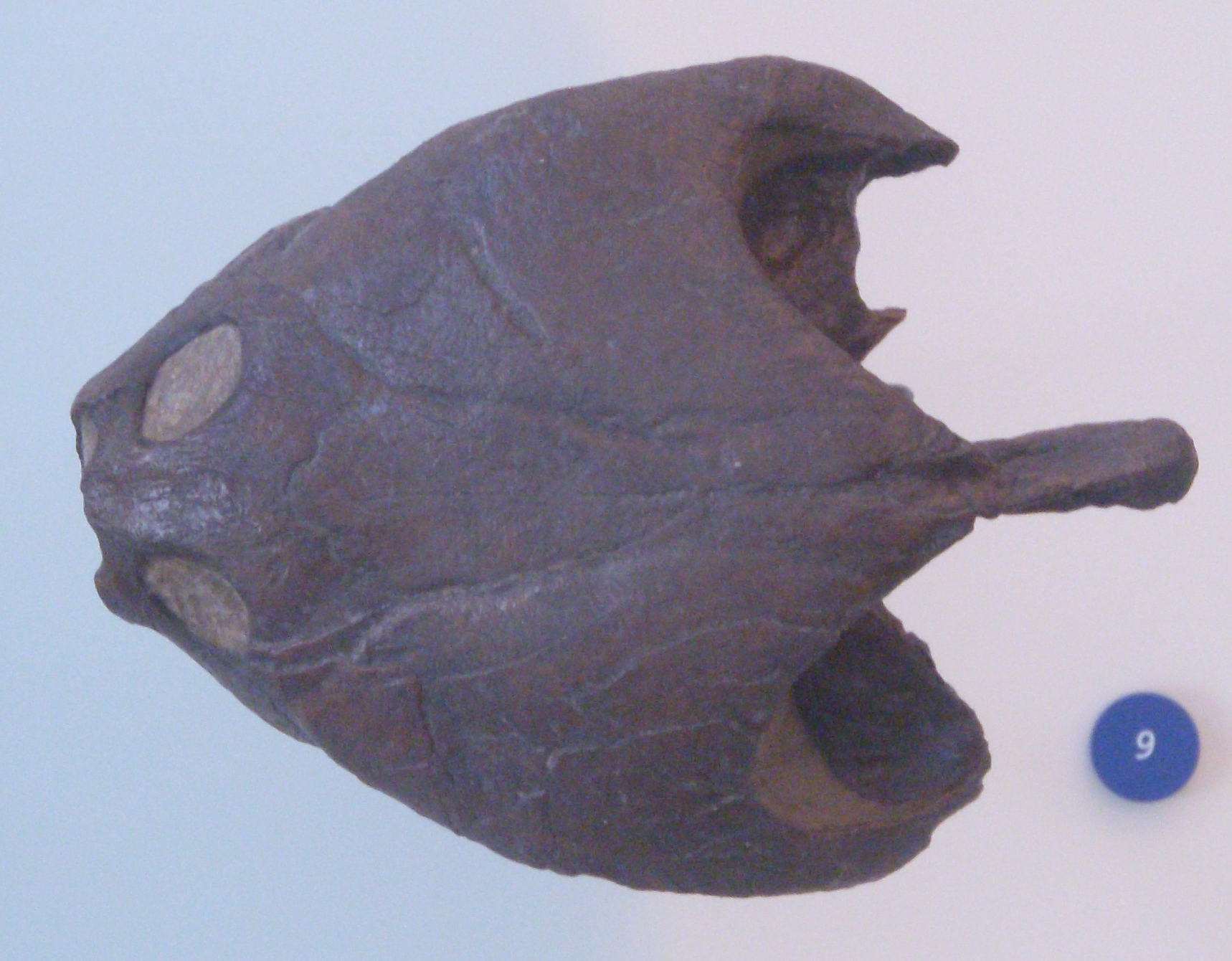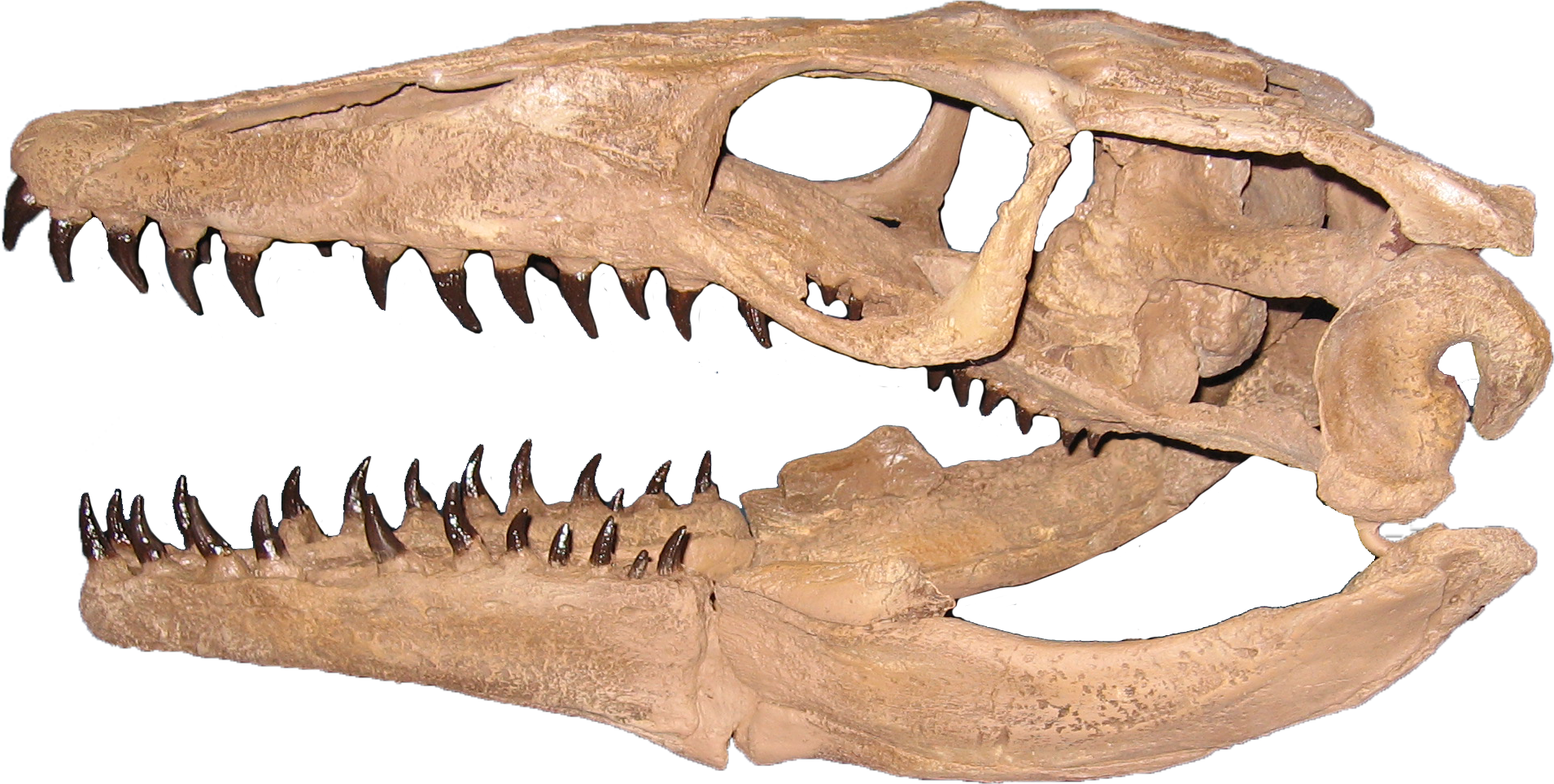|
Dukamaje Formation
The Dukamaje Formation is a geological formation in Niger whose strata date back to the Late Cretaceous. Dinosaur remains are among the fossils that have been recovered from the formation.Weishampel, David B; et al. (2004). "Dinosaur distribution (Late Cretaceous, Africa)." In: Weishampel, David B.; Dodson, Peter; and Osmólska, Halszka (eds.): The Dinosauria, 2nd, Berkeley: University of California Press. Pp. 604-605. . A wealth of Mosasaur fossils have also been recovered from this formation, particularly from the area around Mt. Igdaman. Fossil content ;Other reptiles * '' Sokotosuchus ianwilsoni'' * '' Palaeophis sp.'' * '' Podocnemis sp.'' * '' Trematochampsa taqueti'' * '' Libycosuchus sp.'' ;Fishes * '' Asteracanthus aegyptiacus'' at |
Geological Formation
A geological formation, or simply formation, is a body of rock having a consistent set of physical characteristics ( lithology) that distinguishes it from adjacent bodies of rock, and which occupies a particular position in the layers of rock exposed in a geographical region (the stratigraphic column). It is the fundamental unit of lithostratigraphy, the study of strata or rock layers. A formation must be large enough that it can be mapped at the surface or traced in the subsurface. Formations are otherwise not defined by the thickness of their rock strata, which can vary widely. They are usually, but not universally, tabular in form. They may consist of a single lithology (rock type), or of alternating beds of two or more lithologies, or even a heterogeneous mixture of lithologies, so long as this distinguishes them from adjacent bodies of rock. The concept of a geologic formation goes back to the beginnings of modern scientific geology. The term was used by Abraham Gottlob Wer ... [...More Info...] [...Related Items...] OR: [Wikipedia] [Google] [Baidu] |
Goronyosaurus Nigeriensis Abelov
''Goronyosaurus'' is an extinct genus of marine lizard belonging to the mosasaur family. Fossils of ''Goronyosaurus'' are exclusively known from the Dukamaje Formation of Niger and Nigeria and also the Rima Formation of Nigeria, and are both Maastrichtian in age. The holotype was first described in 1930 as ''Mosasaurus nigeriensis'', but subsequent remains revealed a highly unique set of adaptations that prompted the species to be reclassified as the only species of the new genus ''Goronyosaurus'' in 1972. These unique adaptations have made ''Goronyosaurus'' notoriously difficult to classify within the Mosasauridae and it is often left out of phylogenetic analyses, although most authors agree that ''Goronyosaurus'' belonged to Mosasauridae. ''Goronyosaurus'' possesses unique teeth, which are unlike the teeth of any other mosasaur. Instead of the cutting teeth common among mosasaurs, ''Goronyosaurus'' has straight teeth with rounded apices adapted for smashing food. Discovery an ... [...More Info...] [...Related Items...] OR: [Wikipedia] [Google] [Baidu] |
Asteracanthus
''Asteracanthus'' (from el, ἀστήρ , 'star' and el, ἄκανθα , 'spine') is an extinct genus of hybodontiform, known from the Middle Jurassic (Bathonian) to the Early Cretaceous (Valanginian). Description Astercanthus was among the largest known hybodontiformes, reaching a length of 2-3 metres. The dentition of ''Astercanthus'' is high crowned and multicusped. Fossil records This genus has been reported from the Middle Triassic to the Cretaceous, though the genus as currently circumscribed dates from the Bathonian-Valanginian, predominantly of Europe. Fossils are found in the marine strata of United States, Iran, Switzerland, Madagascar, Morocco and Europe. A complete skeleton was described in 2021 from the Late Jurassic (Tithonian) aged Solnhofen Limestone. Previously considered synonymous, the genus ''Strophodus'' (Middle Triassic-Late Cretaceous) is now considered distinct, with the teeth of ''Asteracanthus'' having more in common with ''Hybodus'' and '' Egerton ... [...More Info...] [...Related Items...] OR: [Wikipedia] [Google] [Baidu] |
Libycosuchus
''Libycosuchus'' is an extinct genus of North African crocodylomorph possibly related to ''Notosuchus'';Buffetaut, E. 1982. Radiation évolutive, paléoécologie et biogéographie des Crocodiliens mésosuchienes. ''Mémoires Societé Geologique de France'' 142: 1–88. it is part of the monotypic Libycosuchidae and Libycosuchinae. It was terrestrial, living approximately 95 million years ago in the Cenomanian stage of the Late Cretaceous. Fossil remains have been found in the Bahariya Formation in Egypt, making it contemporaneous with the crocodilian ''Stomatosuchus'', and dinosaurs, including ''Spinosaurus''. It was one of the few fossils discovered by Ernst Stromer that wasn't destroyed by the Royal Air Force during the bombing of Munich in 1944. The type species, ''L. brevirostis'', was named in 1914 Stromer 1914, p. 28 and 29, fn. 1 and described in 1915.Original citation: Stromer, E. 1915. Ergebnisse der Forschungsreisen Prof. E. Stromers in den Wüsten Ägyptens. II. Wirb ... [...More Info...] [...Related Items...] OR: [Wikipedia] [Google] [Baidu] |
Trematochampsa
''Trematochampsa'' is a dubious extinct genus of crocodyliform from the Late Cretaceous (Coniacian-Santonian age) In Beceten Formation of Niger. Taxonomy The type species, ''T. taqueti'', was described by Eric Buffetaut in 1974. A second species, ''T. oblita'', was named from Madagascar in 1979, but was renamed ''Miadanasuchus'' in 2009. ''Trematochampsa'' gives its name to the Trematochampsidae, a poorly known group of fossil crocodiles. However, the labile phylogenetic position of ''Trematochampsa'' in many studies has been attributed to character conflict, leading many authors to exclude this genus from many cladistic analyses, but Sertich et al. (2014) noted that the referred material of ''Trematochampsa'' consists of more than one crocodyliform taxon, so they opted to use only the cranial material in the dataset for the cladistic analysis of ''Rukwasuchus'' and recommended removing the postcranial material from ''Trematochampsa''. The analysis recovered ''Trematochampsa'' a ... [...More Info...] [...Related Items...] OR: [Wikipedia] [Google] [Baidu] |
Podocnemis
''Podocnemis'' is a genus of aquatic turtles, commonly known as South American river turtles, in the family Podocnemididae. The genus consists of six extant species occurring in tropical South America.''Podocnemis'' The Reptile Database. www.reptile-database.org. Three additional species are known only from fossils. Species These six species are extant. *''Podocnemis erythrocephala'' – *''Podocnemis expansa'' – *''Podocnem ...[...More Info...] [...Related Items...] OR: [Wikipedia] [Google] [Baidu] |
Palaeophis
''Palaeophis'' ('ancient snake') is an extinct genus of marine snake that is the type genus of the extinct snake family Palaeophiidae. Described species within this genus lived in the Eocene epoch, with some unnamed or questionable records from Cenomanian and Maastrichtian. Fossils of species within this genus have been found in England, France, Denmark, Morocco and Mali. Remains have also been found in North America, including Maryland and Virginia (from the early Eocene Nanjemoy Formation),Blake, S. F. "Note on a vertebra of Palaeophis from the Eocene of Maryland." Journal of the Washington Academy of Sciences 31.12 (1941): 501-503. GeorgiaParmley, Dennis, and Harold W. Reed. "Size and age class estimates of North American Eocene palaeopheid snakes." Georgia Journal of Science 61.4 (2003): 220. and Mississippi.Holman, J. Alan. "Palaeophis casei, new species, a tiny palaeophid snake from the early Eocene of Mississippi." Journal of Vertebrate Paleontology 2.2 (1982): 163-166. De ... [...More Info...] [...Related Items...] OR: [Wikipedia] [Google] [Baidu] |
Fossilworks
Fossilworks is a portal which provides query, download, and analysis tools to facilitate access to the Paleobiology Database The Paleobiology Database is an online resource for information on the distribution and classification of fossil animals, plants, and microorganisms. History The Paleobiology Database (PBDB) originated in the NCEAS-funded Phanerozoic Marine Pale ..., a large relational database assembled by hundreds of paleontologists from around the world. History Fossilworks was created in 1998 by John Alroy and is housed at Macquarie University. It includes many analysis and data visualization tools formerly included in the Paleobiology Database.{{cite web, title=Frequently asked questions, url=http://www.fossilworks.org/cgi-bin/bridge.pl?page=FAQ, publisher=Fossilworks, access-date=17 December 2021 References {{Reflist External links {{Wikidata property, P842 * [Baidu] |
Sokotosuchus
''Sokotosuchus'' is an extinct genus of dyrosaurid crocodyliform which existed during the Maastrichtian in western Africa. Fossils of the genus were found in the Dukamaje Formation of Nigeria, and some cranial material has possibly been found in Mali Mali (; ), officially the Republic of Mali,, , ff, 𞤈𞤫𞤲𞥆𞤣𞤢𞥄𞤲𞤣𞤭 𞤃𞤢𞥄𞤤𞤭, Renndaandi Maali, italics=no, ar, جمهورية مالي, Jumhūriyyāt Mālī is a landlocked country in West Africa. Mali .... References Bibliography * Further reading * L. B. Halstead. 1975. ''Sokotosuchus ianwilsoni'' n. g., g. sp., a new teleosaur crocodile from the Upper Cretaceous of Nigeria. Journal of Mining and Geology 11(1-2):101-103 Dyrosaurids Prehistoric pseudosuchian genera Prehistoric marine crocodylomorphs Maastrichtian genera Late Cretaceous crocodylomorphs of Africa Cretaceous Nigeria Fossils of Nigeria Fossil taxa described in 1975 {{paleo-archosaur-stub Fossils of ... [...More Info...] [...Related Items...] OR: [Wikipedia] [Google] [Baidu] |
Mosasaurus
''Mosasaurus'' (; "lizard of the Meuse River") is the type genus (defining example) of the mosasaurs, an extinct group of aquatic squamate reptiles. It lived from about 82 to 66 million years ago during the Campanian and Maastrichtian stages of the Late Cretaceous. The earliest fossils of ''Mosasaurus'' known to science were found as skulls in a chalk quarry near the Dutch city of Maastricht in the late 18th century, which were initially thought to have been the bones of crocodiles or whales. One skull discovered around 1780, and which was seized by France during the French Revolutionary Wars for its scientific value, was famously nicknamed the "great animal of Maastricht". In 1808, naturalist Georges Cuvier concluded that it belonged to a giant marine lizard with similarities to monitor lizards but otherwise unlike any known living animal. This concept was revolutionary at the time and helped support the then-developing ideas of extinction. Cuvier did not designate a scientifi ... [...More Info...] [...Related Items...] OR: [Wikipedia] [Google] [Baidu] |
Platecarpus
''Platecarpus'' ("flat wrist") is an extinct genus of aquatic lizards belonging to the mosasaur family, living around 84–81 million years ago during the middle Santonian to early Campanian, of the Late Cretaceous period. Fossils have been found in the United States and possible specimens in Belgium and Africa. A well-preserved specimen of ''Platecarpus'' shows that it fed on moderate-sized fish, and it has been hypothesized to have fed on squid, and ammonites as well. Like other mosasaurs, it was initially thought to have swum in an eel-like fashion, although another study suggests that it swam more like modern sharks. An exceptionally well-preserved specimen of ''P. tympaniticus'' known as LACM 128319 shows skin impressions, pigments around the nostrils, bronchial tubes, and the presence of a high-profile tail fluke, showing that it and other mosasaurs did not necessarily have an eel-like swimming method, but were more powerful, fast swimmers. It is held in the Natural History Mu ... [...More Info...] [...Related Items...] OR: [Wikipedia] [Google] [Baidu] |
Plioplatecarpus
''Plioplatecarpus'' is a genus of mosasaur lizard. Like all mosasaurs, it lived in the late Cretaceous period, about 73-68 million years ago. Description ''Plioplatecarpus'' was a medium-sized mosasaur, measuring long and weighing . The eyes of ''Plioplatecarpus'' are proportionally larger than those of many mosasaur genera, although the skull is relatively short. The larger eyes may be an adaptation to low light conditions like those found in deeper water. It has fewer teeth than most mosasaurs, but they are greatly recurved. This suggests that ''Plioplatecarpus'' would have hunted relatively small prey that it could grab very precisely. The broad distribution of fossil remains in both North America and Europe suggest that it would have been an open ocean predator. Discovery ''Plioplatecarpus'' was first found in Europe by paleontologist Louis Dollo (''P. marshi''), in 1882. It was relatively incomplete, but more fossils would soon turn up. In North America, Edward Drinker Co ... [...More Info...] [...Related Items...] OR: [Wikipedia] [Google] [Baidu] |






